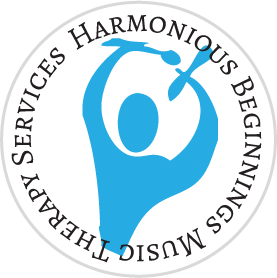Individual Therapy
Individual Therapy
Direct music therapy services are provided one on one for individual clients. First an intake and an assessment are done, then the length and frequency of sessions is determined based on the results. Areas typically addressed through music therapy are focus/attending goals, emotional goals, sensory integration, speech/language and behavior issues. Goals are written and re-evaluated on a regular basis.
METHODOLOGY
Neurologic Music Therapy
Neurologic Music Therapy (NMT) techniques are based on how the brain processes music. Through the use of functional MRIs, we have a better understanding of how music affects the brain and NMT techniques have been developed through research. NMT techniques can be divided up into 3 domains, speech/language, motor and cognitive.
- Speech/Language techniques address: fluency,articulation, quality of voice, pitch and timbre, breath control.
- Motor techniques address: range of motion, coordination, strength and tone.
- Cognitive techniques address: sensory processing, attention/focus and executive function.
Improvisation
One of the best techniques to use to explore the surroundings and express emotions is improvisation. To be in the moment and authentic to the time and space in order to create music is an expression of our unique perspective. With the music, we can turn a mistake into a new theme and react to what is happening in real time to adjust to the surroundings. For non verbal clients, the drum or the xylophone or the keyboard can turn into an expression of a voice that has never been used and when that happens, the music has become a powerful tool.
Sensory Integration
When we experience our environment through all 8 senses, yes 8, we learn from that experience and when our sensory experience is distorted, our ability to learn is compromised. Our 8 senses: sight, hearing, taste, smell and touch, along with our proprioception, body awareness and sense of balance need to be able to integrate information. When we experience things through more than one sense at a time, the experience is richer and more valuable. Music is a wonderful tool to use to integrate a sensory experience.
If a person is over sensitive or under sensitive to certain stimuli, they can not learn at their optimal level. Finding the right balance can help to reach your highest potential.
Relaxation Techniques
Anxiety is another issue that impedes our ability to learn and function at our optimal level. Stress brings on a host of problems physical, emotional and behavioral. When someone has to deal with anxiety on top of another diagnosis it can create other issues and areas of dysfunction. Emotional expression is often difficult and inappropriate, which can lead to behavior issues. Gaining control over emotions and calming anxieties is addressed through relaxation techniques in a music therapy session.




